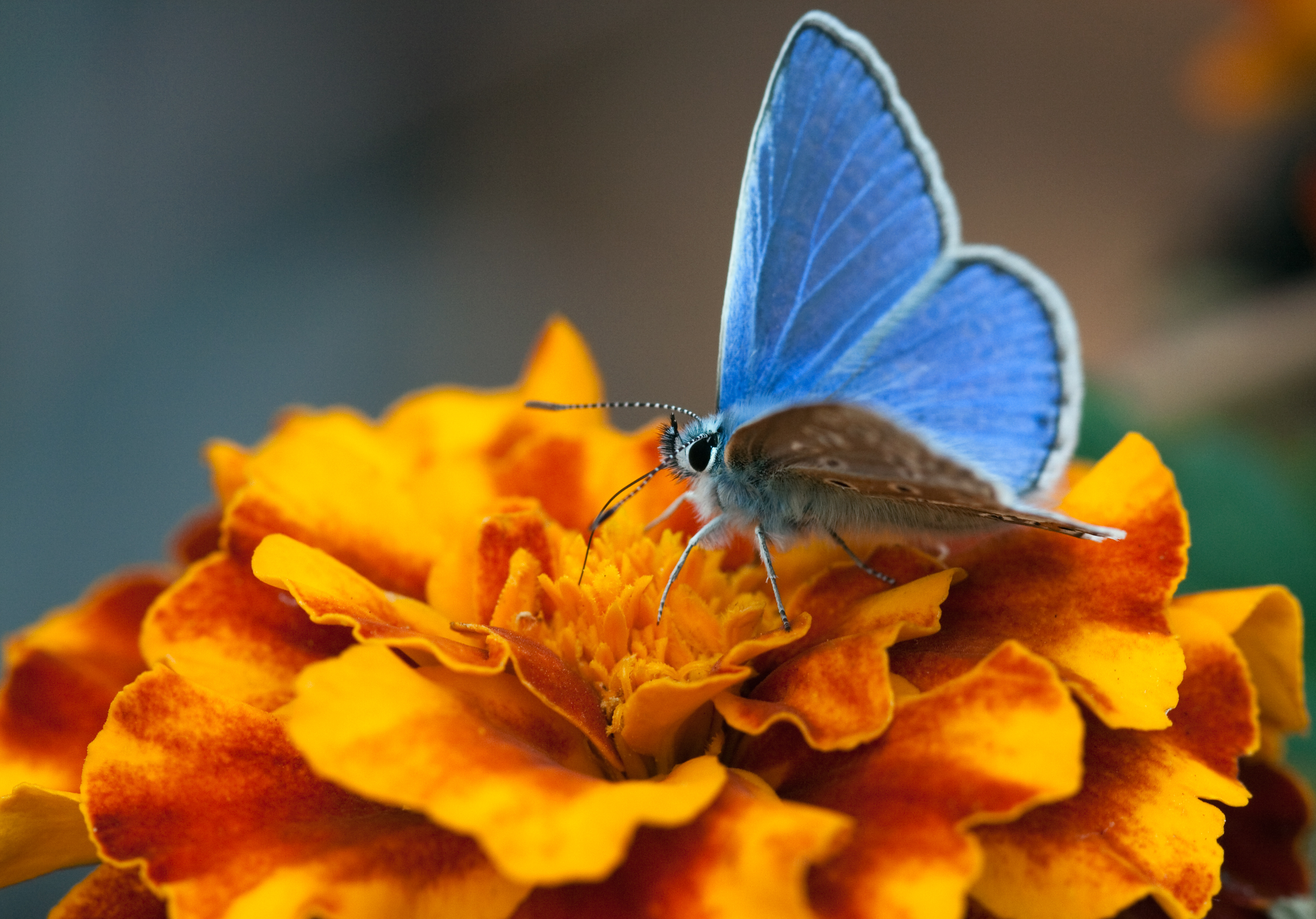The UK has just recorded its warmest November day according to the Met Office. On the first day of the month temperatures were hotter at 22.3C in Trawsgoed, Wales, than in Barcelona. The average maximum November temperature ranges from 13C in the South of England to 10C in Scotland.
In the unseasonably warm weather, nectar plants such as Perennial Wallflower Bowles Mauve, Red Valerian and Red Campion are still blooming in the South of England. It is important to provide continuous nectar sources for butterflies before they enter hibernation and for those emerging early next year. The warm soil provides an ideal opportunity to plant a selection of shrubs that will flower in turn over the winter and into the spring and summer, attracting butterflies, moths and bees.
Mahonia Mahonia x media 'Charity'
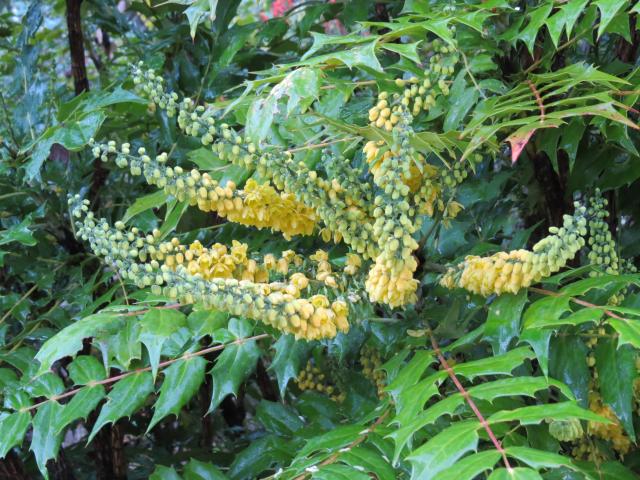
Slender spikes of pale yellow flowers, with a Lily of the Valley scent, appear from November to March. Speckled Wood butterflies have been seen nectaring on Mahonia recently and it is also a favourite of the Red Admiral.
This hardy, upright, evergreen shrub has rosettes of large, dark green, holly-like leaves. It prefers full or partial shade with moderately fertile, moist or well-drained soil. It can reach 5m high by 4m wide. The flowers are often followed by small, deep purple berries, which are much loved by birds.
Laurustinus Viburnum tinus
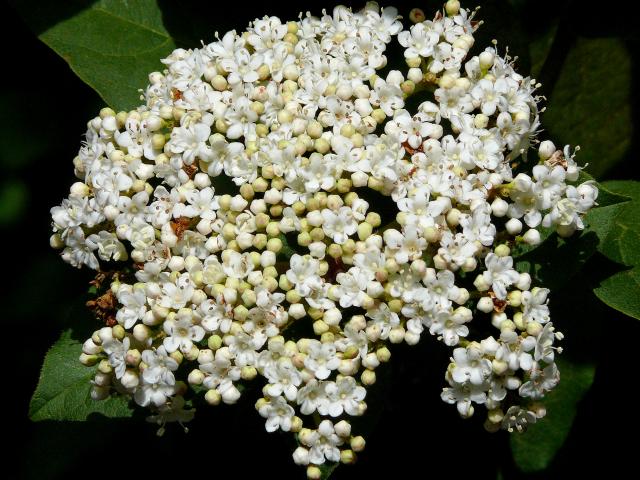
Clusters of scented, star-shaped, white flowers open from pink buds from December to April, followed by dark blue-black fruit.
This hardy, evergreen shrub, with dark green foliage, is easy to grow and will reach 3m x 3m. It needs moderately fertile, moist, well-drained soil and will thrive in sun or part shade. It can be used as a hedging plant and trimmed in early summer if needed.
Viburnum tinus ‘Eve Price’ has scented, pinkish-white flowers from December to April and is denser and more compact than the species (above).
Viburnum tinus ‘Gwenllian’ has scented, pink-tinted white flowers from October to March.
Gold-edged Winter Daphne Daphne odora 'Aureomarginata'
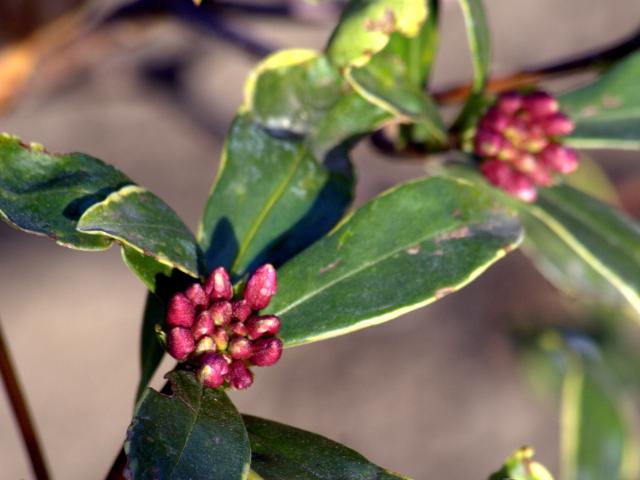
Clusters of small, highly-scented, pale pink flowers appear from January to March.
This compact, evergreen shrub, of 1.5m height and spread, has dark green leaves with yellow margins. The flowers are followed by red fruit. It needs moderately fertile, well-drained soil in a sheltered position in sun or partial shade. It is slow growing and pruning should be kept to a minimum.
Californian Lilac Ceanothus x delileanus ‘Gloire de Versailles’
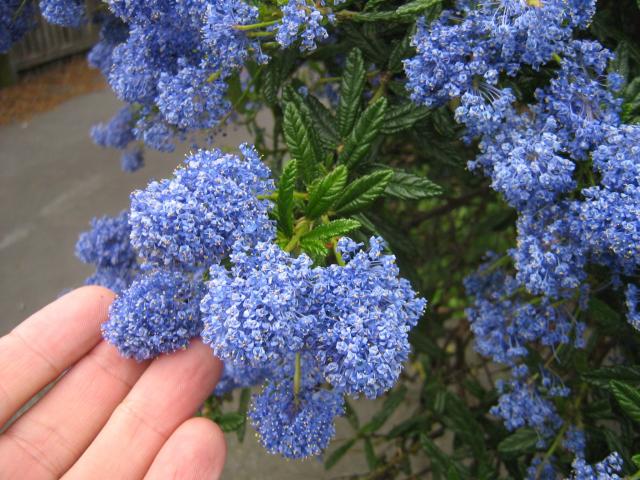
Powder blue, sweetly-scented flowers occur from June to October.
The quick-growing, deciduous shrub, which reaches around 1.5m high, should be planted into fertile, well-drained soil in full sun, with shelter from cold winds. It can be grown as a free standing specimen or trained against a wall or fence.
Bluebeard Caryopteris x clandonensis ‘Heavenly Blue’
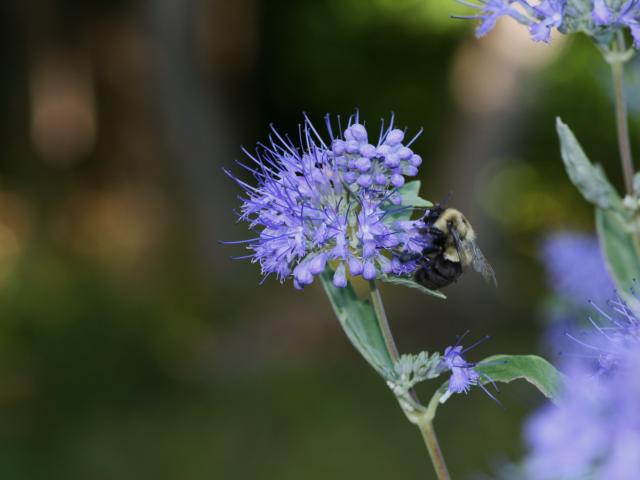
Clusters of dark blue flowers appear in August and September.
The upright stems, reaching 1m high, hold aromatic, grey-green leaves. This hardy and drought tolerant plant needs moderately fertile, well-drained soil in full sun. In March prune all of the flowered stems back hard.
Please enjoy these delightfully fragrant shrubs, which will brighten the winter days to come. I’d also be interested to know which pollinators find them a valuable source of nectar in your garden.
Happy Gardening!
The Secret Gardener


